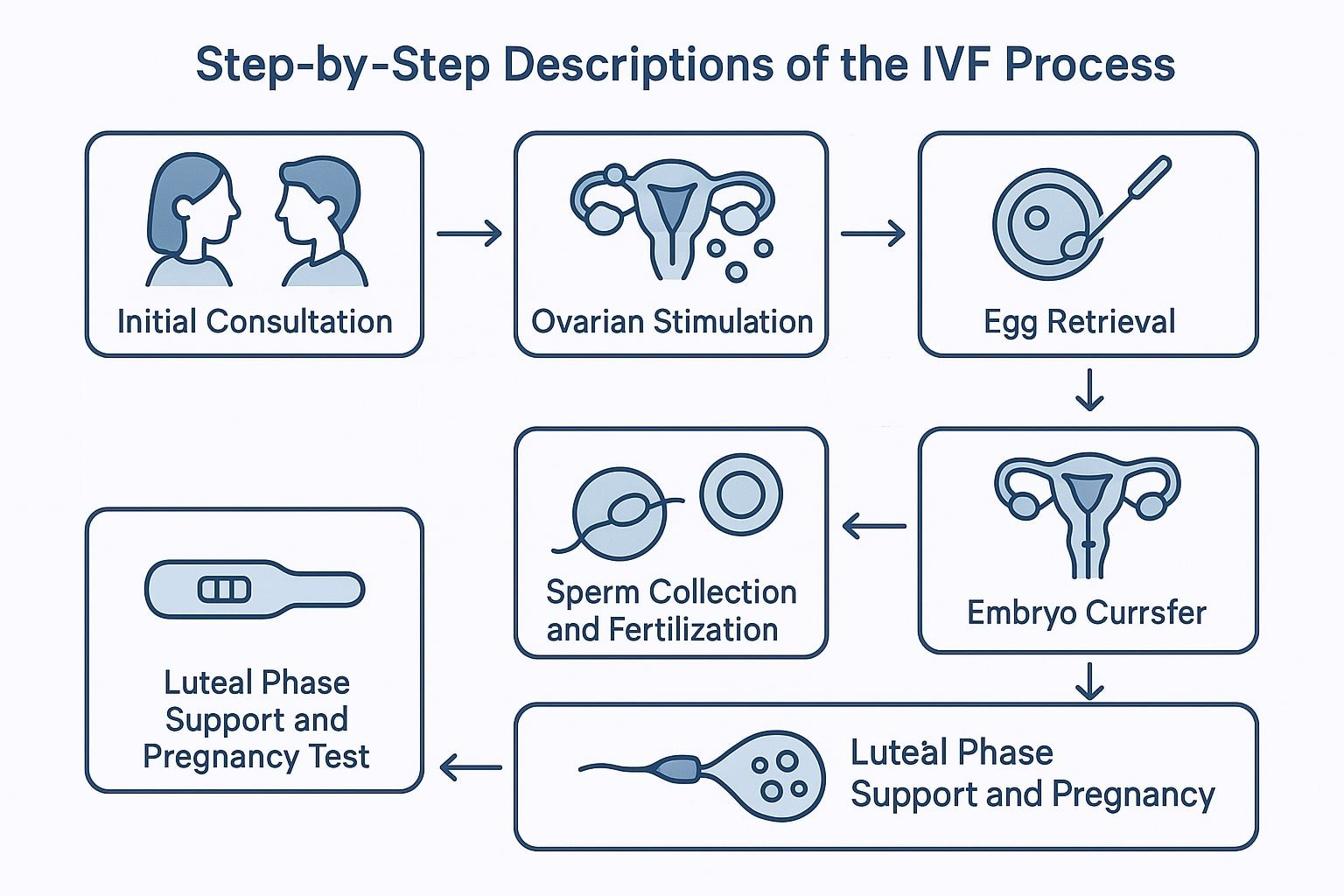Stepping forth to consider in vitro fertilisation (IVF) may be considered as a daunting process, but a brief explanation of every phase helps in simplifying it. I will explain the entire IVF treatment process to you step by step as it ought to be so that you can know what to expect.
Step-by-Step Descriptions of the IVF Process

Initial Consultation
It starts with a consultation, where your case history is taken. Blood work and ultrasound tests are performed in order to assess the current state of your reproductive health for the creation of your personalized treatment plan.
Ovarian Stimulation
Fertility injections are given to increase the number of eggs that can be fertilised. Blood tests and ultrasounds monitor the growth and maturity of the eggs.
Egg Retrieval
Once the eggs have matured, a minor surgical procedure is utilised to retrieve them. Under light sedation, a thin needle is inserted through the wall of the vagina and the recovery period is short.
Sperm Collection and Fertilization
The sperm collected is added to the egg and retrieved in the lab for fertilisation. Sometimes, using intracytoplasmic sperm injection is when only one sperm is injected inside the egg to increase fertilisation possibilities.
Embryo Culture
The fertilized eggs now become embryos, which are then cultured for a couple of days in the right environment. The best embryos are selected by the embryologist for implantation. Genetic testing may be done prior to transfer to screen for genetic disorders.
Embryo Transfer
A selected embryo is placed in the uterus via a thin catheter. It’s a painless, fast procedure that doesn’t involve anaesthesia. You can easily continue with normal activities after this procedure.
Luteal Phase Support and Pregnancy Test
Hormonal medications support the uterine lining and embryo implantation. A pregnancy test, usually administered two weeks after the transfer, will determine whether the procedure was successful or not.
Also Read: IVF Success Rates: What You Need to Know
Conclusion
If you are looking to do IVF treatment in Ahmedabad, then you must see an IVF specialist in Ahmedabad. The Sumiran Women’s Hospital takes you through the journey of bringing an end to infertility by helping you conceive with love. Reach out today and take the first step toward parenthood!
Frequently Asked Questions
What is a good IVF success rate?
A “good” success rate depends on age, clinic quality, and health history. For women under 35, the average success rate can be 40–50% per cycle. Over 40, it drops — but it’s still possible.
How many IVF cycles does it usually take to get pregnant?
Some couples get lucky on the first try, but many need 2–3 cycles. Think of IVF as a process, not a one-shot deal.
Can lifestyle changes improve IVF success?
Absolutely. Maintaining a healthy weight, eating balanced meals, getting enough sleep, and cutting out smoking or alcohol can make a real difference.
Are IVF success rates the same at every clinic?
Nope — clinics vary a lot. Look for accredited clinics with published success rates, experienced doctors, and good lab facilities.
How to calculate pregnancy weeks after IVF?
Pregnancy weeks after IVF aren’t counted from the embryo transfer — they’re actually calculated from the first day of your last menstrual period (LMP), just like natural pregnancies. But since IVF cycles are carefully tracked, your clinic usually gives you an official “pregnancy start date.”
For example, if you had a day-5 embryo transfer, your doctor will add 2 weeks (to match a natural cycle) + 5 days — so you’re already considered 2 weeks and 5 days pregnant on transfer day.
When to take a pregnancy test after IVF?
The wait is tough, but don’t test too early! Most doctors recommend taking a blood test (beta hCG) 10–14 days after embryo transfer. Testing too soon can give a false negative, which just adds stress. Trust the timeline — and let your clinic guide you.
